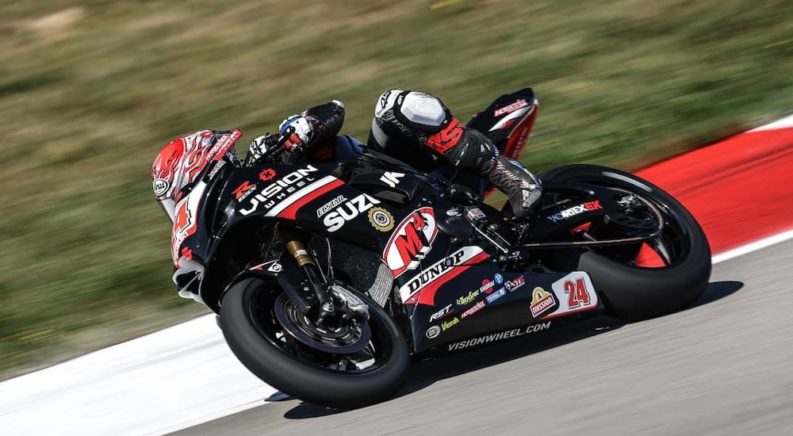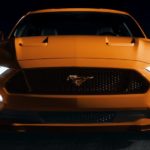Speed has always been at the heart of the motorcycle industry as manufacturers like Suzuki transformed traditional bicycles into motorized chariots capable of getting us from Point A to Point B faster than humans have any right to go. Suzuki’s 1952 prototype, the Atom, was underpowered, with its 30cc engine barely churning out 0.2 hp. Even then, the demand for power was prominent and led Suzuki to build the Power Free with its 36cc engine and its successors, the 60cc Diamond Free and the 90cc Colleda.
Over the years, our insatiable need for speed has blossomed as riders look for high-performance bikes that are engaging to ride. We’re no longer satisfied by practicality or efficiency and, instead, want an invigorating and dynamic experience in the saddle. Of course, indulging this insatiability and our ever-growing demands comes in many forms, like the GSX-R750 that you’ll discover along your journey to find the best Suzuki motorcycle dealer near you.
The GSX-R750 does something remarkable by proving riders can have their proverbial cake and eat it too. Debuting in 1985, the GSX-R750 defined a new class of motorcycles, introducing riders to the world of modern sportbikes. It set new standards for performance, speed, and versatility, forever securing Suzuki’s position as a pioneer in the industry. Here’s everything you need to know about the legendary GSX-R750 and how Suzuki predicted its future over three decades ago.
Introducing the World to the Sportbike: Call It “The Gixxer”
Suzuki was well-established in the motorcycle industry by the 1980s but worked diligently to distinguish itself by capitalizing on something few other manufacturers could deliver––a street-legal powerhouse. Inspired by rule changes to the American Superbike series that limited bikes to 750cc engines, Suzuki developed the GSX-R750. It was a new breed of bike, and Suzuki knew as much. “The Suzuki GSX-R is the essence of motorcycling reduced to its purest form, and the GSX-R will be a motorcycling legend,” the manufacturer said during its debut.
The Gixxer, as it soon became known, was revolutionary for many reasons, specifically its powertrain and cooling system. Built on a lightweight aluminum frame with full fairings, the GSX-R750 came with a 750cc powerplant that gave it far more grunt and torque than the 400cc GSX-R that had debuted a year earlier in Japan. But even more impressive was that Suzuki created a brand-new air/oil cooling system dubbed SACS (Suzuki Advanced Cooling System) that saved more weight than a traditional water-cooled engine. The result was phenomenal, with the Gixxer weighing only 387 lbs, producing 100 hp, and promising a top speed of 148 mph.
Defying Trends for the Sake of Speed: A More Powerful Middleweight
The GSX-R750 made a lasting impression in the 1980s and ignited a frenzy in the industry that has never fully ended. Demand for the GSX-R750 and other 750cc bikes skyrocketed, but it also rekindled that insatiable need for speed among riders. If the Gixxer could deliver, why not ask for more? That became the million-dollar question among riders, igniting a shift in the industry that threatened the GSX-R750’s throne.
Racers turned to seemingly more capable bikes like 600cc Supersports and 1000cc superbikes, forcing Suzuki to answer those demands with new models like the GSX-R600 and GSX-R1000. But where did that leave the GSX-R750? Was it the end of the sportbike’s run? Fortunately, it was only the beginning.
While most manufacturers would’ve hung up their hats and discontinued the original Gixxer, Suzuki did something surprising by proving the GSX-R750 could endure and outperform. Moreover, keeping its price tag affordable made the sportbike accessible to more riders and a justifiable investment. At the same time, its small size earned it a place in the middleweight segment, where its 750cc engine outperformed. In short, it established a niche market and dominated it as the “perfect” bike.
Racers like 500cc World Champion Kevin Schwantz discovered as much and the GSX-R750’s incredible edge over heavier rivals. “I’ve had 1000s in the past, and I guarantee you that I can go around a track faster on a 750 than I can on a 1000,” he told Motorcycle News. “I still think from 600 to 750 to 1000, as close as all those bikes are now, the extra mass, extra power, everything about the 1000 for me is that much harder work. The 750 is the perfect bike… It’s a 600 with a little bit more grunt and a little bit more torque. It’s the perfect combination.”
The Gixxer Today: Are Sportbikes Still a Thing?
Just as the GSX-R750 launched the sportbike segment, it also inspired manufacturers to find new ways to deliver greater power and performance. Parallel twins and triples soon took the place of the inline-four 750cc, overshadowing the middleweight class by providing next-level power and improved efficiency. With that, it seemed there wasn’t a place for the original Gixxer in the industry, but die-hard Suzuki fans disagreed.
Although the GSX-R750’s popularity faded among the masses, Suzuki kept the sportbike alive in the North American market. What’s its current niche if more riders are turning to sport tourers for comfort and dual sports for on-road and off-road adventures? Pure performance and simplicity without the frills.
Today, the GSX-R750 continues to defy the odds as the industry’s only 750cc inline-four sportbike. It’s also one of the most affordable bikes in the middleweight category, with the 2023 model starting at $12,849. That’s an incredible deal for riders looking for a modern classic with the heart of a samurai.
Suzuki keeps the GSX-R750’s price tag low by keeping the bike simple, focusing solely on performance and handling. As a result, you won’t find much in terms of advanced technology or features like wheelie mitigation, traction control, or even an antilock braking system. The two-mode Suzuki Drive Mode Selector is as advanced as it gets and lets you tailor the engine’s power delivery to the conditions. For the GSX-R750, what more could you need?
The GSX-R750’s simple and classic design reflects its heritage and the niche it carved over the last three decades as a middleweight powerhouse with a penchant for speed. It still relies on the twin-spar aluminum frame that revolutionized the segment and turns to its fuel-injected 750cc four-cylinder engine to deliver optimal power at any speed. The Showa Big Piston Front Fork gives you more opportunities to enjoy the ride and harness the GSX-R750’s power, while twin Brembo Monobloc front brake calipers provide exceptional stopping power. It’s a winning combination that follows the age-old advice: “If it ain’t broke, don’t fix it.”
The Legend Continues
The 2023 GSX-R750 continues a nearly forty-year reign as the industry’s original sportbike. Suzuki predicted the GSX-R750’s future with its 1985 debut, promising the bike would be legendary. To say that prediction came true is an understatement and a testament to Suzuki’s ingenuity and remarkable foresight in building the perfect bike.
The GSX-R750’s heritage, its current position as the only 750cc sportbike with an inline four, and the vast selection of affordable aftermarket parts make it wildly popular even today. Its impressive performance and reasonable price tag make it a worthy investment that doesn’t require explanation or rationalization. It’s undeniably a stripped-down middleweight powerhouse that can add dynamic performance and speed to your weekday commute or offer a rush of adrenaline on the track. Wherever you venture is entirely up to you, the GSX-R750 is simply there to deliver the ride.



